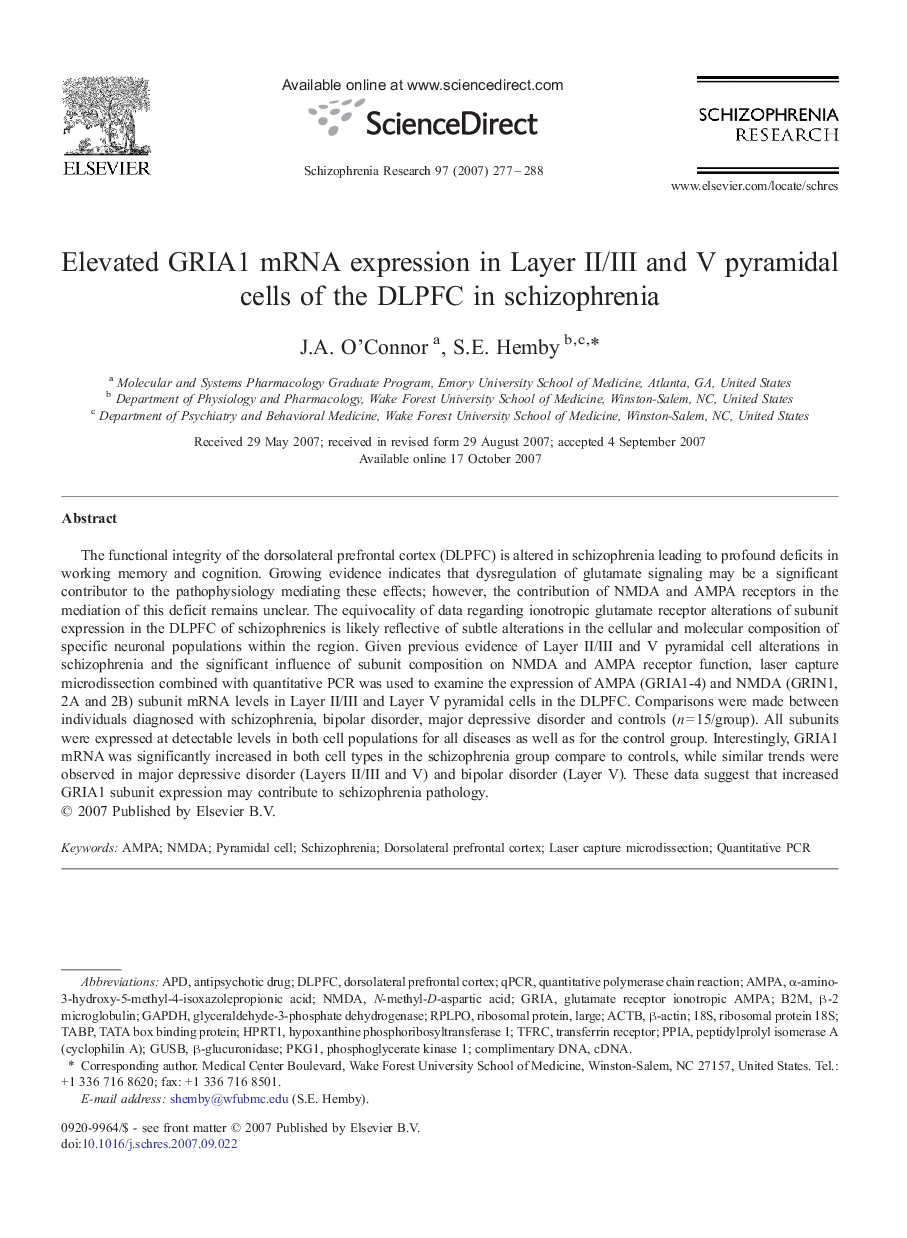| Article ID | Journal | Published Year | Pages | File Type |
|---|---|---|---|---|
| 342008 | Schizophrenia Research | 2007 | 12 Pages |
The functional integrity of the dorsolateral prefrontal cortex (DLPFC) is altered in schizophrenia leading to profound deficits in working memory and cognition. Growing evidence indicates that dysregulation of glutamate signaling may be a significant contributor to the pathophysiology mediating these effects; however, the contribution of NMDA and AMPA receptors in the mediation of this deficit remains unclear. The equivocality of data regarding ionotropic glutamate receptor alterations of subunit expression in the DLPFC of schizophrenics is likely reflective of subtle alterations in the cellular and molecular composition of specific neuronal populations within the region. Given previous evidence of Layer II/III and V pyramidal cell alterations in schizophrenia and the significant influence of subunit composition on NMDA and AMPA receptor function, laser capture microdissection combined with quantitative PCR was used to examine the expression of AMPA (GRIA1-4) and NMDA (GRIN1, 2A and 2B) subunit mRNA levels in Layer II/III and Layer V pyramidal cells in the DLPFC. Comparisons were made between individuals diagnosed with schizophrenia, bipolar disorder, major depressive disorder and controls (n = 15/group). All subunits were expressed at detectable levels in both cell populations for all diseases as well as for the control group. Interestingly, GRIA1 mRNA was significantly increased in both cell types in the schizophrenia group compare to controls, while similar trends were observed in major depressive disorder (Layers II/III and V) and bipolar disorder (Layer V). These data suggest that increased GRIA1 subunit expression may contribute to schizophrenia pathology.
